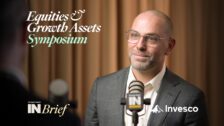Back to school – who gets the best grades?
Assume you are the global portfolio manager of the Sector Hindsight Fund. This allows you to make decisions with knowledge about equity sector performance with hindsight, but not stocks within the sectors. The pedantic client base would expect you to show risk management as well, therefore a single sector is not on.
Beating the global index over the past 3-5 years could have been as simple as having no exposure to Energy or Financial stocks and holding everything else. For a more sophisticated take, the drag from the low-performing sectors such as Industrials and Real Estate could be managed via an underweight, while taking on bigger positions in IT and Healthcare. How easy is that?
There are a good number of equity managers that have held little to nothing in Energy or Real Estate. A small handful of curated Financial and Industrial stocks may be there for the sake of balance, while the rest is spread across the remaining sectors. Attribution will readily demonstrate if this was the case. Stock selection is usually paraded as the ‘smarts’ within the team, yet this has been subservient to the bigger picture, this year particularly so, given the dominance of IT and internet stocks.
Inherently staying with the current positioning of the best-performing active managers is a bet that the relative sector bias will remain favoured. The Sector Foresight Fund would have a struggle to argue against this view. The established mindset is that equity exposure is about capturing the most dynamic growth sectors with least economic sensitivity, a perfectly logical decision.
It is, however, resulting in outperformance from a narrow handful of fund managers with similar stocks in their portfolios. To get some diversity without delving into value takes effort.
The attribution from stock selection can be a telling factor. Selecting the best stocks in less-attractive sectors is arguably an under-rated merit. There may still be some drag from the weakness in the sector, yet it can be a better demonstration of the investment process than making the case for another FAANG stock. If circumstances warrant a change in emphasis, there is knowledge and experience in these less-favoured parts of the market.
Of the other metrics used to contemplate a portfolio are the batting average and win/loss ratio. The first measures how often the stock selection is right and the second the management of the positions to capture the upside. If the portfolio is concentrated, a lowish batting average is potentially fine as one is expecting a few outsized winners. It requires a particular personality to be committed to these risks. Large portfolios need higher batting averages to outperform and probably reflects a generally cautious stance by the investment team.
The average win/loss can also be telling. Growth-oriented portfolios usually have higher win/loss ratios, particularly in IT, based on data from Novus, a hedge fund consultancy. Conversely, healthcare does well enough without elevated win/loss. The key is cutting losses on stocks where the investment thesis is no longer valid.
From this flows a few questions for global equity managers:
- Is the sector bias structural? A case can be made for leaving energy out, given its challenges. Conversely, it may be too early to write off financials and industrials.
- Does the fund do better than the sector in its stock selections? Otherwise a sector index fund may be a more efficient option.
- What proportion of stocks determine performance, and does that make sense with respect to the structure of the fund?
- How frequently are losses realized and what is the average drag from losses?











